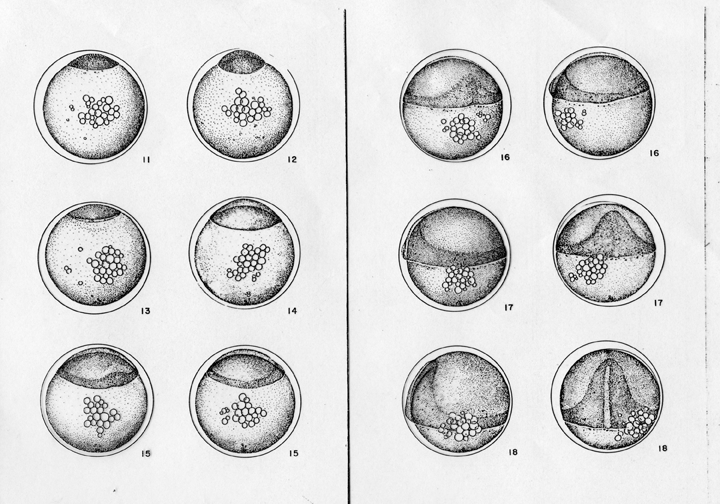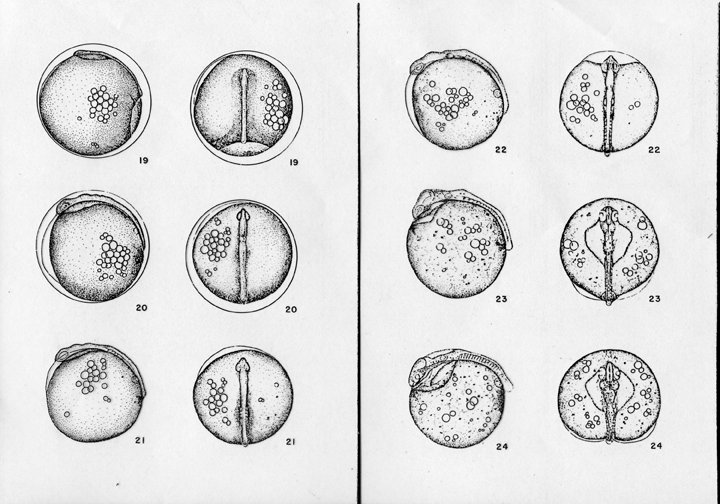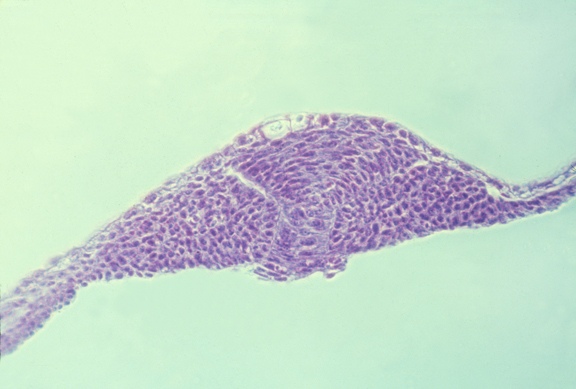Lecture notes for Wednesday, January 18, 2017
Embryology of Teleost Fish
Why is so much embryological research (and grant funding) now being concentrated of one species of teleost fish? (The Zebrafish; which have long been kept by hobbyists)First, what are teleosts? They are one of the subgroups of bony fish.
The great majority of species of fish are teleosts (about twenty thousand species).
Garfish are not teleosts, and have a slightly different embryology. Bowfins and sturgeons are also not teleosts, and their embryology is also significantly different. Cleavage is holoblastic.
Sharks are not "bony fish", and their embryology is a lot different. Lampreys and hagfish are even more distantly related, and their embryology is very different.
***********************************************************************
Zebrafish survive and go through their whole life cycle in captivity (and are not hard to feed)
(Unlike, for example, the teleosts killifish and salmon, on which most research on fish development used to be done).
They are reasonably small.
Zebrafish have a reasonably short life cycle (months, instead of years).
They lay eggs externally, in contrast to "live bearing species" in which development occurs inside the mother's body). Many dozens of eggs are laid per female.
The eggs and embryos are transparent.
They are not polyploid. (Xenopus laevis turned out to be tetraploid!)
Many mutant lines have been found and are being kept in "stock centers".
The genome has been sequenced, except for heterochromatin. ).
***********************************************************************
Teleosts have meroblastic cleavage.
Teleosts develop two extra-embryonic membranes:
-
The Enveloping Layer.
The Yolk Syncytial Layer
The body of the fish develops entirely from the "Deep Cells"
These are crowded into a lens-shaped space below the hemispherical epithelial enveloping layer and the spherical mass of yolk below them.
During their gastrulation, the enveloping layer spreads over the yolk, surrounding it. This spreading is the fish's special way of gastrulating, and is called epiboly.
Deep cells crawl toward what will be the head and body axis, converging from both right and left sides.
By pushing down on the deep cells, you can easily induce formation of more than one head, and two or more body axes, that merge toward the tail end, as conjoined twins.
***********************************************************************
Diagram of a teleost egg in the blastula stage.

-------------------------------------------------------
Links to videos:
-
video of an early fish egg (Fundulus)
another video of early cleavage
animation of teleost gastrulation (epiboly)

Drawing of stages of development in a fish embryo.
For comparison to sea urchin, mammals, amphibians etc., please see the big figure
-------------------------------------------------------
A series of excellent drawings of development in the fish Fundulus heteroclitus, by Philip Armstrong of Rochester University:




Fish embryo in the neurula stage:
